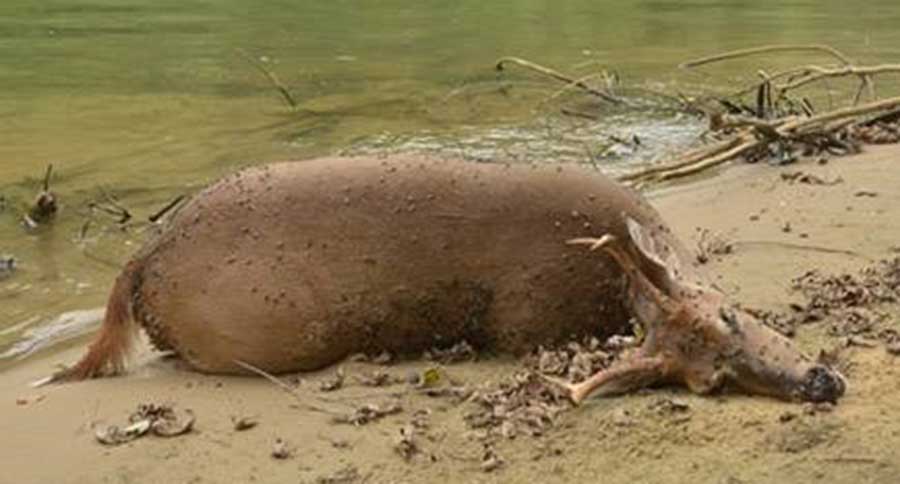A western Kentucky whitetail deer tested positive for hemorrhagic disease, the state's first confirmed case of this year.
As summer begins to wane and the shift to fall begins, deer hunters across the country are gearing up for the best time of the year. For some in Kentucky, that excitement is countered by the recent news of a hemorrhagic disease (HD) case in the western portion of the state.
Hemorrhagic disease is different from Chronic Wasting Disease (CWD), which has yet to be detected within Kentucky's borders.
The local wildlife agency's press release laid it out:
Murray State University's Breathitt Veterinary Center recently confirmed to the Kentucky Department of Fish and Wildlife Resources that a deceased female deer recovered from Graves County tested positive for hemorrhagic disease, sometimes referred to as "blue tongue" or EHD.
The report said that Kentucky Fish and Wildlife will be investigating other possible cases involving 22 deer in 11 counties, and the number of positive EH tests is expected to grow in the coming weeks. Through Aug. 21, KFW had received reports of suspected hemorrhagic disease in 22 deer in these counties: Anderson, Carroll, Christian, Graves, Greenup, Harrison, Meade, Oldham, Trimble, Scott and Shelby counties. So far the only confirmed case was the Graves County deer, while the rest are awaiting test results.
"Hemorrhagic disease cannot be transmitted to people or pets," said Dr. Christine Casey, state wildlife veterinarian for Kentucky Fish and Wildlife. "It is caused by two different viruses: epizootic hemorrhagic disease virus (EHD) and bluetongue virus. These viruses are transmitted to deer by small biting flies, also called no-see-ums."
Though HD poses no immediate threat to humans, a disease-ridden deer population is nothing to sneeze at.
However, deer that die from HD almost always pass on within 36 hours of contracting it from an insect bite. People commonly find HD-infected carcasses near water, and since they die relatively quickly, the deer appear to be in good shape, with decent body weight and no physical signs of a problem.
All the same, the state agency is encouraging public input and reporting should they suspect a deer may be infected.
"Kentucky's archery deer hunting season opens early next month," said Gabe Jenkins, deer and elk program coordinator with Kentucky Fish and Wildlife. "The department is asking hunters and others to be on the lookout for sick looking deer. Deer with hemorrhagic disease can be more susceptible to other diseases. For that reason, the department always cautions against eating the meat from a deer that doesn't appear to be healthy."
Outbreaks of this specific disease are not new to Kentucky or its surrounding states. The Bluegrass State sees localized outbreaks nearly every year, with significant regional or widespread outbreaks occurring about every five years. The last time west Kentucky saw an outbreak was 2012, and the last statewide outbreak occurred in 2007.
For more information on HD in Kentucky and elsewhere, you can visit the online resources from the Kentucky Department of Fish and Wildlife Resources.




